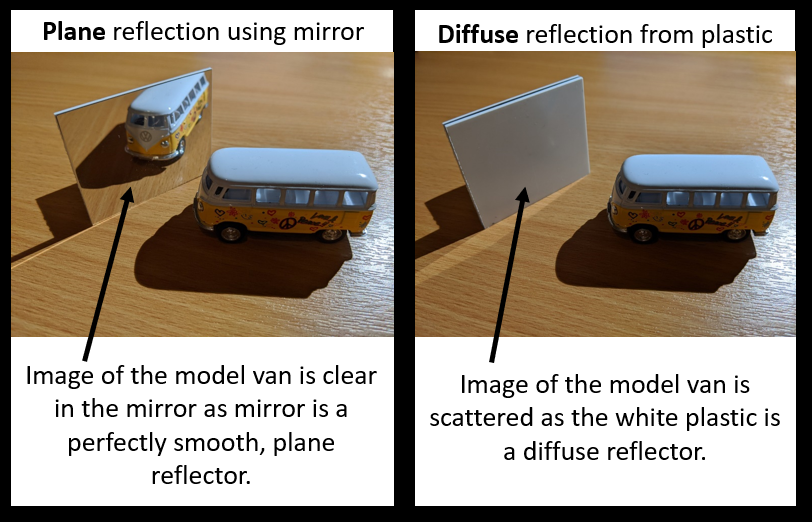All Textbook Topics - Light - Reflection - Plane and diffuse reflection
Plane and diffuse reflection
Plane reflection is when light rays reflect off a perfectly smooth surface in a way that the reflected rays are at the same angles with respect to each other as they were when they were initially going towards the reflector.
Diffuse reflection happens when a surface is not perfectly smooth and the rays scatter in all directions. The surface must be smooth at a microscopic level to be a plane reflector. This is why an object that feels smooth to us, may be a diffuse reflector as it is rough at a microscopic level. The diffuse diagram below shows a bumpy surface at a microscopic level.

The effect of the plane reflection is that when you see the reflected image, it is clear.
The effect of the diffuse reflection, and it causing the light rays to scatter, is that when you see the reflection, you cannot see a clear image, or no image at all.

The photo above shows a diffuse reflector scattering the image of the light slightly, you can still make out the rough shape. The photo shows a diffuse reflector, but you cannot see the van at all, the light rays are too scattered.

All of our textbook pages have associated quizzes. Register for free to access them.
Register For Free